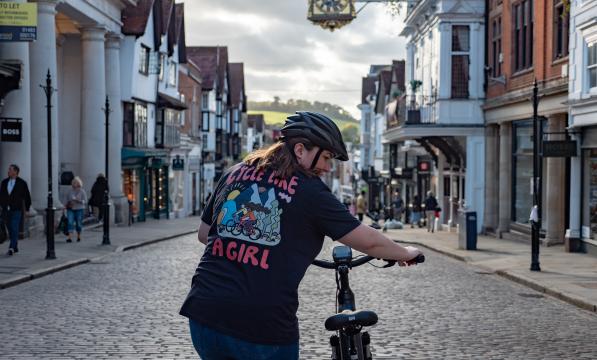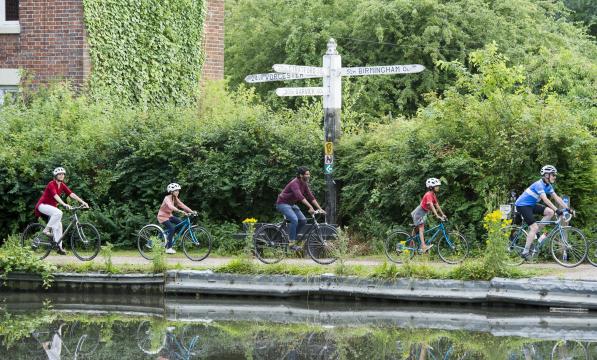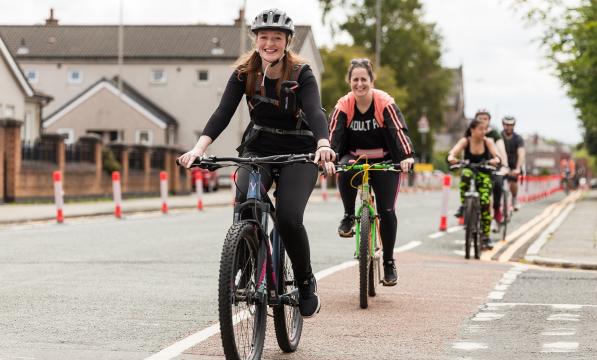42 ways to transform cycling in York

Twenty years ago, York used to present itself as ‘Britain’s Best Cycling City.' How times have changed. Suggest that to any cycling 'Yorkie' now and they’d probably laugh in your face. Today it’s almost universally acknowledged in the city that York’s transport system is in a total mess. The relentless growth in traffic and in the size and speed of cars is disfiguring this beautiful, historic city and threatens to undermine much of what is good about life in York.
It's no surprise then, that amidst all the consequent noise, pollution, road danger and stress, we’ve seen a 30% decline in cycle use in the city since 2014. And no surprise either, that City of York Council has dropped the ‘Britain’s Best’ moniker, its dismal recent record on cycling no longer being something to shout about. Where did it all go so wrong?

A history lesson
Contrary to its contemporary chocolate box image, York was once a heavily industrialised town, gritty as any other. Yes, two chocolate factories, but also a large concentration of railway and other dirty engineering sites. Collectively they employed large workforces, whose primary means of transport was the bicycle. Old timers still wax lyrical about the flood of cycles on the streets when those factory gates opened. Unlike many similar ex-industrial towns, York retained a high residual level of this utility cycling, perhaps due to its narrower streets and flat and compact geography.
We can also thank a spirited citizen campaign that narrowly defeated misguided attempts to smash urban freeways through the Victorian inner suburbs during the 70s, albeit without complete success, as York was bequeathed a gruesome inner ring road complete with four gyratories, that encased its beautiful city walls and cut off the centre from the suburbs. The ring road remains one of the biggest disincentives to cycling in York, in addition, curiously, to its pedestrianised city centre.
The pedestrianised centre dates back to the late 80s. Innovative at the time, it was one of the largest in Europe, but sadly, in its exclusion of cycling, it reflected the anti-bike prejudice and priorities of the day. Coupled with the huge growth in car use at the time, for cyclists, it was the perfect storm. York’s ‘footstreets’ now work in tandem with the congested inner ring road to create a huge impenetrable barrier at the heart of the so-called cycling network. This lack of foresight was a sad feature of an otherwise positive cycling legacy left by the pre-unitary authority councils of the day.
Post 1996, York’s local authority expanded to take in outlying commuter villages and has in effect become a three-way marginal, such that control has passed through the hands of all three main parties in the last ten years. Since then, any meaningful innovation in transport policy has been subject to the rules of political football. A case in point was a botched and unpopular attempt by Labour to close a busy city-centre bridge to private cars in 2013, ostensibly to improve conditions for buses and cyclists.
Despite the policy appearing in the extant Liberal Democrat transport plan, other parties made political capital out of its failure and the consequence of their political manoeuvring is that any meaningful intervention on transport was cast beyond the realms of political common sense for at least a decade.

Mobilising for change
Given this dire situation, in 2017, a bunch of us decided to take action. A cycle campaign had nominally existed in York since the 80s but had become moribund, so a couple of prominent local cycling voices on social media made the call, a meeting was held, and the revived York Cycle Campaign was born. We’ve been building our campaign ever since. It’s not all been plain sailing – building an organisation from scratch entirely through the voluntary efforts of its members, minimal budgets and a pandemic to boot – but over time we’ve created the basic organisational structure and plunged ourselves into the business of civic activism.
A cycle campaign needs to work on two fronts. On one, we need to act as a lobby group to influence the policy makers – our local politicians and council officers. This largely comes down to responding formally or otherwise to consultations and speaking out at planning committees and it all gets a bit policy wonky. Such work is vital and necessary but can at times be immensely frustrating. That debacle over the bridge has created a do-nothing political culture on transport with politicians giving lip service to active travel, but in reality, running scared of what they perceive as a potential ‘populist’ backlash to any meaningful action, despite local and national surveys showing a consistent public appetite to the contrary.
We need to engage with the public to stoke a wider desire for change which in turn we can hope to bring to bear on policy makers. This is how 42 Ways to Transform York was born
Andy Shrimpton, York Cycle Campaign
On the other front, we need to engage with the public to stoke a wider desire for change which in turn we can hope to bring to bear on those policy makers. This is how 42 Ways to Transform York was born. The idea was to publish a manifesto of sorts, but to create something much more engaging rather than a simple list of demands. We wanted to get our ideas across with a bit of explanation to educate the public (as transport matters can be somewhat counter-intuitive), and, most importantly, to create an effective recruitment document to inspire and attract new members.
A vision for the future
So the brief that we set ourselves was as follows: make something visually interesting with lots of photos. It should be easy to read with direct, straight-talking language rather than something nerdy or technical. Make it accessible, with easy to dip-into, short sections that can be read individually or sequentially. Present a balance of the positive (all the good news that cycling brings) and the negative (the dismal current state of affairs). Finally, the 'manifesto' needs to provoke to get attention, so make it a bit of a polemic and don’t be afraid, amongst other things, to be anti-car (the bulk of which we tucked away in an appendix called “The Dirty Dozen”).
There are as we say on the tin, 42 ways, but the key themes can easily be summed up…
- York is a mess, but there’s a cheap solution with virtually no downsides
- To make the good stuff happen, York needs to invest in a viable cycle network
- The city centre is at the heart of the cycle network. We call for an expansion of the traffic restricted zone, whilst allowing for greater cycle access to the existing footstreets, with short, direct and clearly defined cross-town routes, both North-South and East-West. The campaign is not, however, asking for unrestricted cycle access to all footstreets
- This network needs to be inclusive and fully accessible to all varieties of cyclist and types of cycle
- York’s current transport strategy is a failure. The new one needs to move beyond mere aspiration and include detailed plans, targets and timescales
- And please… spend the money at the top of the transport hierarchy – on legs, bikes and buses and not at the bottom – on our four-wheeled friends.

On 4 May, there are local elections in England, including the election of a new unitary authority in York. We urge the new council to take note of 42 ways that could transform our city, and deliver change so we can truly call York 'Britain's Best Cycling City'.
Interested in learning more about local cycle campaigning? Connect with the Cycle Advocacy Network today
All images are taken from 42 Ways to Transform York, York Cycle Campaign.





